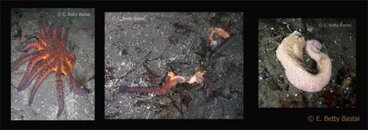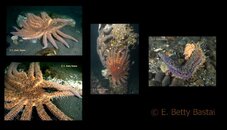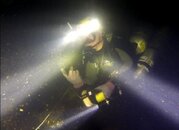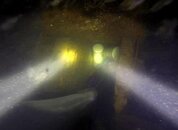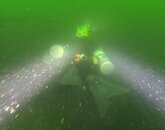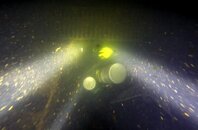In Winter the meandering topography of Puget Sound offers a good number of shore dive sites sheltered from inclement weather. However, its relentless overcast sky can significantly increase a craving for sunlight. Last December my buddy had a whole week off work for Christmas and we decided to escape the gloomy Pacific Northwest by driving to sunny Monterey and diving in California waters for the first time.
View attachment 176004
We did five dives at the easily accessible “breakwater” or Coast Guard Pier in Monterey where we were surrounded by the unfamiliar colors of bat stars, strawberry anemones and other invertebrates. We also had a real close encounter with a curious harbor seal; it was so close that the only thing that I could see through my mask was the spotted skin of its belly; my nose almost touched it. I must say that the temptation to pet the animal was very strong.
View attachment 176010
View attachment 176008
Luckily, we were able to do a couple of dives at Point Lobos State Reserve near Carmel. We parked at Whaler's Cove and after checking the site we chose to explore the middle reef which required the least amount of surface swimming.The swells did not seem particularly powerful but soon I discovered how deceptive my first impression was. We entered the water at a boat ramp crammed between rocks. As the day progressed, we realized that entering was easier than exiting. The visibility was pretty bad in shallow water but cleared up at 30 ft. Ten feet deeper we still felt the action of the surge.
After exploring the reef and the giant kelp we spent the remaining time away from the churning bottom and in the water column. We hovered with a bunch of blue rockfish (a species that so far we have never seen in the Pacific Northwest) for a while and have a good peaceful time observing their inquisitive behavior.
View attachment 176012
On the second dive we surface swam further out the middle reef. At the end of the dive we misjudged the distance to the boat ramp, surfaced and realized how far it was still. So we figured that submerging again and swimming under a few feet of water would have been easier than kicking on the surface. It turned out to be a mistake. The combination of zero visibility and what seemed to be stronger wave action made me feel seasick. We re-surfaced, surface-swam and reached the point of entry without any other problems. However, the low tide had exposed the entire boat ramp and the breakers were crashing against our clumsy bodies more forcefully than before, so we felt that it was safer to crawl out rather stand up on our feet and walk on slippery rocks and concrete.
We spent the last day in Monterrey diving the breakwater. While sea lions were lazily taking a nap on rocks, diving birds kept showing up underwater frantically searching for fish. We scrutinized the artificial reef with sharper eyes and finally in narrow cracks we began to see abalone. Then, unexpectedly, my buddy spotted a brave one crawling in the sandy bottom revealing its beautiful shell in its full glory.
The following morning, we packed our car to its loading limit and instead of following the slow, yet breathtakingly scenic coastal road as we did on the way down, we drove east to reach I5 and then north. On the road, as we watched the weather progressively deteriorating, our spirits remained invigorated by the Californian sun. Our minds were filled with terrific lasting memories of animal encounters and underwater southern dazzling beauty. There was no doubt that we would be back.
View attachment 176009
